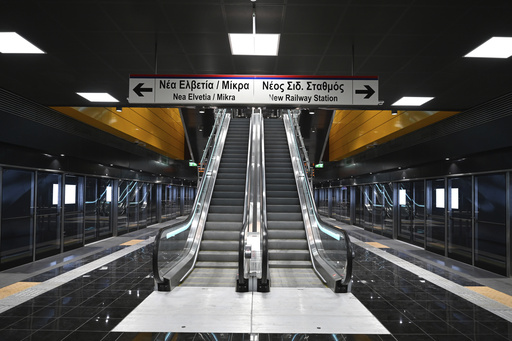
Thessaloniki, Greece’s second largest city, is set to unveil a new subway system that highlights archaeological treasures uncovered during prolonged construction delays.
The inaugural 9.6-kilometer line is scheduled to officially launch on November 30, featuring driverless trains along with advanced platform screen doors. Construction efforts began in 2003, disrupting the ground beneath the densely populated city, home to approximately one million residents, as excavations revealed an extensive collection of significant relics.
Transport and Infrastructure Minister Christos Staikouras remarked that this project is a unique amalgamation of historical and contemporary elements, merging the city’s rich archaeological legacy with modern subway infrastructure.
The tunneling process traced ancient commercial routes in the port area, which has been continually inhabited since antiquity. It unveiled a Roman-era roadway, ancient burial sites, intricate water and drainage systems, mosaics, inscriptions, and tens of thousands of artifacts from various periods, including the Byzantine and Ottoman eras.
To maintain the integrity of these ancient discoveries, the tunnels were bored deeper than initially planned, resulting in both additional costs and time delays.
Notably, key archaeological pieces have been integrated into the design of the subway, with displays located throughout the 13-station underground network. One highlight is a section of the marble-paved Roman street showcased at the Venizelou Station, located in the central area.
Staikouras emphasized the various obstacles the project faced, including encountering over 300,000 archaeological finds, many of which are now featured at differing stations along the main line.
Initially proposed over a century ago, the Thessaloniki metro’s completion has inspired a sense of astonishment among local residents, who often viewed the extended delays as a running joke regarding bureaucratic inefficiency and unmet commitments.
Officials estimate the costs associated with the subway project have reached approximately 3 billion euros ($3.1 billion) for the first line, while the second line is also nearing completion and expected to be operational within a year.
The consortium behind the construction includes Greece’s Aktor, Italy’s Webuild, and Japan’s Hitachi Rail.
